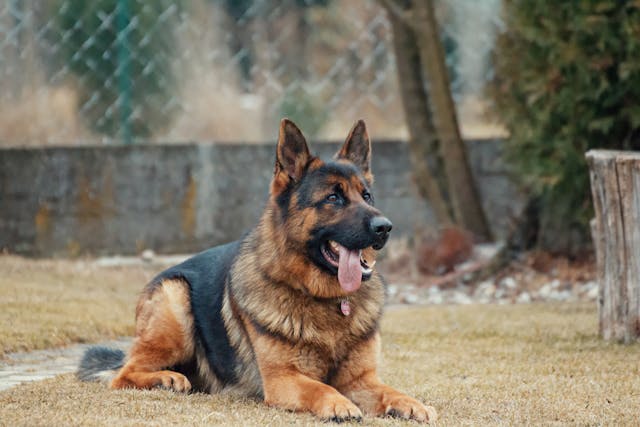
Why do dogs pant? Dogs pant to lose heat because they don’t have as many sweat glands as we do. Many animals have different ways of losing heat.
We have evolved to be able to lose a lot of heat through our skin. We have roughly 2 to 4 million sweat glands all over our bodies. The sweat glands are controlled by the hypothalamus in the brain. When we need to cool down, they are activated, and they secrete water onto our skin. The water evaporates off our skin and takes heat energy with it. It takes a lot of energy to make water turn to a vapor, and all of that energy comes out of our bodies. When the water turns to vapor, it takes that heat energy with it, cooling us down. We also dilate our blood vessels and bring blood closer to the skin when we are hot, which is why hot people are usually red. This brings the heat energy closer to the skin to be removed. This doesn’t work so well when the air is very humid because it prevents the sweat from evaporating. Sweating is a great method to cool down, but it does require water, which means we need to drink more when it is hot.
We have the advantage that we are not covered in fur, and all of our skin can be exposed to the air. That might not be an advantage in the cold winter, but it is in the hot summer. Dogs are obviously covered in fur, and sweat glands all over their body would not be effective because the water would not be able to evaporate. However, dogs do have some sweat glands. Dogs have sweat glands on their paws and on their noses. This makes sense because these are the only parts of the dog that don’t have fur. Water excreted through these glands will be able to evaporate. Those glands alone, though, are not enough for a dog to cool down, so they also pant.
Panting cools a dog in the same way that our sweat glands cool us. They release a lot of water onto their tongue and extend their tongue as far as possible to increase the exposed surface area. Then they breathe in and out rapidly. Breathing rapidly in and out increases the air flow over the tongue and increases the rate at which the water can evaporate. Dogs will also stretch out on the ground when it is hot, to increase their surface area as much as possible. Curling up in the winter keeps heat in, and stretching out in the summer lets heat out. As it does, it carries heat away from the dogs. Interestingly, having fur isn’t always as hot as we might think. Fur is a good insulator, which means it keeps heat from leaving the animal in the winter, but it also keeps heat from getting in to the dog in the summer. Dogs and most animals with fur shed their thicker coat in the winter, leaving just a thin coat that keeps the heat out. Camels use their fur to stay cool. Camels have thick fur, but they also have sweat glands over their bodies. Their fur is a light color to reflect heat, but it also lets the sweat evaporate through it. Their fur traps a layer of air as well, which keeps hot air from getting in.
Cats keep cool in a similar way to dogs. They have sweat glands in their paws and noses, so in the summer, your cats’ feet might feel damp. They also pant, but not as obviously as dogs do. Cats lie down and stretch out in hot weather to increase their surface area, just as dogs do. Cats also do something that dogs don’t. Cats lick themselves all over, which helps keep them clean, but it also helps cool them down. They cover themselves in a layer of saliva, which evaporates, taking heat energy with it. Cats also have a higher body temperature than we do, so they can put up with higher temperatures than we can.
Other animals have different ways of staying cool. Horses actually have sweat glands all over their bodies, and you can see horses covered in sweat after any horse race. Most animals stay cool by keeping out of the sun. Some animals, such as elephants and hippos, go into water to cool down. Hippos also cover themselves in mud to keep cool and prevent sunburn. Some birds poo on their legs to keep cool. Bird poo is very watery, and some birds, such as vultures, poo on their own legs so that the water can evaporate and take the heat energy away. Some animals can radiate heat away. Elephants and rabbits have very large ears for their body sizes. This large surface area allows them to transfer heat to the air. There are also some animals that shut down through the hotter months. Estivation is the word for sleeping through the summer. Hibernation is sleeping through the winter. There are some frogs that bury themselves in sandy ground to stay cool.
Sources
https://www.petmd.com/dog/general-health/why-do-dogs-pant
https://en.wikipedia.org/wiki/Sweat_gland
https://manypets.com/us/blog/how-does-panting-cool-dogs-down
https://asknature.org/strategy/how-a-camels-fur-coat-keeps-it-cool
https://www.catslove.com/en/body-temperature-of-cats
Photo by Summer Stock: https://www.pexels.com/photo/adult-german-shepherd-lying-on-ground-333083/

Pingback: How does deodorant work?